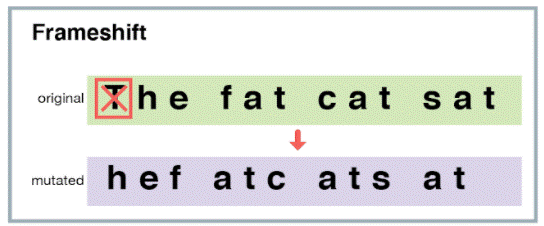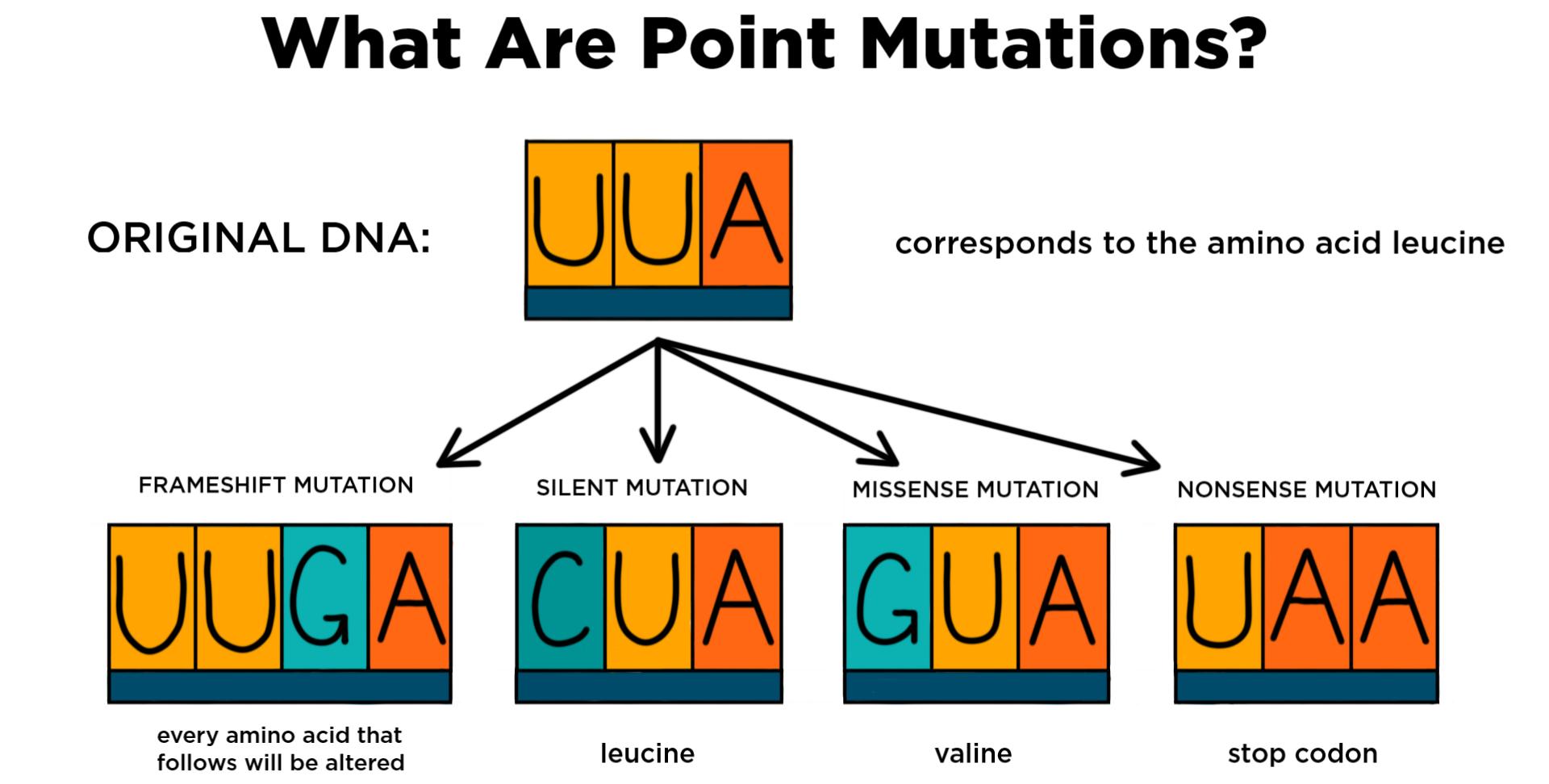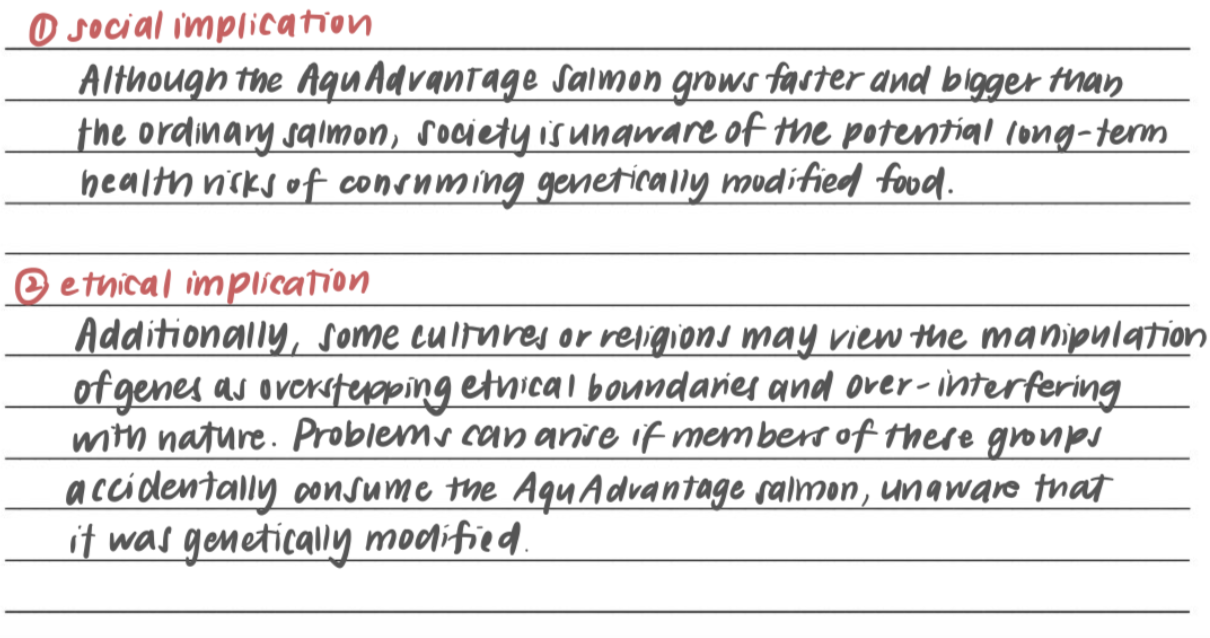Welcome to your Complete Guide to Module 6 of HSC Biology, where we discuss everything to do with genetic change! This module builds heavily on the concepts covered in Module 5 Heredity. From spontaneous mutations to the implications of gene-altering biotechnology, this module deep dives into how genotypes can be introduced to a population, leading to genetic variation and different phenotypic expressions.
This guide aims to get you up to speed on the concepts and skills needed to blitz Module 6 Biology. If this sounds up your alley, keep reading!
Key Concepts in Module 6 of HSC Biology
Concept #1: Mutations in DNA sequence cause genetic change.
Firstly, genetic change can occur through mutations in an organism’s DNA. Sometimes, these mutations occur randomly, such as when there are errors in DNA replication. Other times, it may arise from exposure to nasty stuff such as mutagens and viral infections, such as in the case of induced mutations.
Now the thing is, there are SO many types of mutations. How do we work through them? One possible classification that is commonly seen in exam questions, is as follows: (1) how much DNA is affected and (2) which cells are being affected?
Point mutations and frameshift mutations.
Let’s first discuss this question: “How much DNA does the mutation affect?”
Recall that a DNA sequence is made up of many nucleotides - that’s your Adenine (A), Cytosine (C), Guanine (G), and Thymine (T). A mutation can either alter very few nucleotides or a large section of them. Three situations most commonly occur in this case:
-
When one nucleotide is replaced with another.
-
When one nucleotide is wrongly inserted.
-
When one nucleotide is wrongly deleted.
Number 1 refers point mutations since it affects a singular nucleotide, and its effects are usually minimal because it has altered such a tiny section of the DNA sequence. However, Numbers 2 and 3 can lead to severe consequences, as they will affect all nucleotides that come afterward the point of mutation. Therefore, Number 2 and 3 are called frameshift mutations, since it changes the reading frame during mRNA transcription, which reads in triplets.
*Analogy time: Imagine a thin stream of water - if we place a large pebble upstream, the flow downstream will be affected as well.
The diagram below does a great job at visualising what happens to the reading frame of a DNA sequence, although it does refer to actual nucleotides.

So, mutations occur. So what? The issue is that when mutations occur, this can lead to serious phenotypical consequences. For instance, a disease caused by point mutations is cystic fibrosis, a horrible disease that is anti-climatically caused by the insertion of two nucleotides and the deletion of another.
To fully understand the consequences of point and frameshift mutations, we need to understand how changes in the DNA sequence can affect the resultant amino acid sequence and protein synthesis outcomes.
What happens when we have frameshift and point mutations affecting the DNA sequence?
Recall that a series of 3 nucleotides gives us a “codon”, a triplet which then corresponds to an amino acid, and amino acids are crucial in protein synthesis for the body! So, point mutations have the potential to affect things on a MUCH bigger scale, such as affecting an entire amino acid sequence. Therefore, we should also consider point mutations in terms of their effects, or their function. We have silent mutations, missense mutations, and nonsense mutations.
-
Silent mutations are when the point mutation miraculously doesn’t change the end amino acid (because remember, multiple codons can point to the same amino acid). They have a neutral effect on the organism’s phenotype, and are sometimes called “synonymous mutations”.
-
A missense mutation is when the point mutation changes the end amino acid.
-
A nonsense mutation is when the point mutation gives us a “nonsense codon”, which is essentially a codon stopping mRNA transcription too early. This then leads to truncated, incomplete, and even nonfunctional end protein products.
To help visualise the different types of mutations, the following diagram may be helpful.

Chromosomal mutations
The problem only gets worse when a large section of nucleotides is affected. Instead of zoom-focusing on the DNA sequence (e.g. a spontaneous mutation in DNA replication we discussed earlier), mutations can happen on a chromosomal level. We call this a chromosomal mutation. All sorts of funky things could happen to sections of the DNA, they could be inverted, deleted, moved onto another chromosome - you name it! In other situations, one may accidentally receive an extra copy of all their chromosomes. Nevertheless, this mistake in chromosomal structure can gravely impact a person’s normal growth and development.
*PS: If you’re interested in learning about the different kinds of mutations, consider Project Academy’s HSC Biology Course. Students will receive access to detailed lessons and notes that will cover these concepts in more depth.
Where mutations occur - somatic vs. germline cells
This section primarily targets the question of: “Which cells do the mutation affect?”
Mutations can either arise in somatic cells (body cells, such as skin cells), or germline cells (sex cells, such as egg and sperm cells), and we fittingly call them somatic mutations and germline mutations respectively.
Somatic mutations only affect parts of one’s body and cannot be passed onto future generations. One example is melanoma, more commonly referred to as skin cancer - the mutation occurs in your skin cells, and will not be inheritable.
Meanwhile, germline mutations occur in eggs for females and sperm for males. Although they do not affect the parent organism, the offspring would have a high chance of carrying the mutation, i.e. inherited mutations. One example of this is Down Syndrome, where a non-disjunction of chromosomes during meiosis is passed on to the offspring.
Concept #2: Technology can actively induce genetic change.
On the opposite end of the spectrum of spontaneous mutations (such as errors in DNA replication), are ones that are intentionally induced. i.e., Genetic change can also be induced artificially by man-made technology. Why would we want to do this? It turns out that being able to genetically modify organisms is helpful in agriculture, manufacturing, and a variety of other industries.
Transgenic organisms and GMOs
This area of the syllabus will involve familiarising yourself with transgenic organisms and species. Depending on what your school chooses to teach as your “case study” or example, the specific content to learn will be different. However, be sure to fully understand how each of the cases work.
Here are some things to consider:
-
What does the technology/process do?
-
What are the mechanisms behind the process?
-
Describe the processes in detail, including the scientific names of relevant organisms involved.
Implications of these technologies
This is where we discuss how using technology to induce genetic change, can have positive or negative impacts. We can consider this from two angles: in society (human aspects) and in the environment (biodiversity aspects).
The positives are easier to pick up - for example, a genetically altered tomato may have a longer shelf life and increased fungal resistance, which is great for consumers like you and me (after all, who wants to make guacamole and realise their tomato is mouldy?!)
However, figuring out the negative implications usually requires a bit more thought. A general rule of thumb here is that the technologically induced genetic change will almost always negatively impact biodiversity. This is because we are disrupting the organisms’ normal processes of natural selection and artificially creating advantageous genes that are favoured in reproduction. As a result, there is less genetic variation than there would be under “normal” circumstances. Another example of this are Cavendish bananas available at Coles or Woolworths. These have been genetically modified to successfully grow on farms, but have become seedless which means that the only way to make more bananas is to clone the parent banana using the stem. Why is this bad? This results in essentially zero genetic variation, which makes the entire population of Cavendish bananas vulnerable to disease and other selective pressures.
For social aspects, we can think about whether the technology is accessible, safe, and ethical. Usually, the technology will have limitations and the answer to these questions will be no. There are a whole variety of limitations you could talk about. For example, one could argue that biotechnology allows humans to essentially “play god” and manipulate the processes of natural selection and evolution, which is disrespectful and disapproved in many religions.
In a second, I will tackle an exam question that will address both of these points. If you want to see an example of this concept in a response, read on!
Key Skills in Module 6
Skill #1: Comfortably differentiating between types of mutation.
One skill that is essential in Module 6 is being able to clearly explain the differences and similarities between types of mutation. To answer these “compare and contrast” questions, you could think about (a) how much DNA is affected and (b) which cells it affects, as we discussed above. In an exam scenario, you could even present your answer in table form. This is beneficial because:
-
Things represented in table format are easy to read. You’ll have an easier time revising.
-
Since it’s easy to read, the marker can easily digest your answer and grade according to their rubric.
An example of this can be seen here:

Since these questions came up so often, I used to write out sample paragraphs to hypothetical questions (e.g. “Compare and contrast somatic and germline mutation”) - that way, I’d have a pre-prepared response in case my school asked a similar question!
PS: Project Academy’s HSC Biology Program also gives you access to a huge variety of practice questions. Their “Books” and “Library” apps are home to thousands of past exam questions, allowing you to test yourself!
Skill #2: Evaluating the implications of biotechnology.
If you were presented with a short-answer question (SAQ) on technologically-induced genetic change, the MAJORITY of the marks will be allocated to this skill.
Questions relating to this topic will usually require you to provide examples, either drawn from your own knowledge (i.e. your case studies) or given to you in a large chunk of text stimuli.
Using these examples, you are often required to do two things:
-
Evaluate the effectiveness of the technology.
-
Evaluate the implications of the technology.
If your school doesn’t give you enough examples/case studies, I’d advise you to do some self-research for popular examples (e.g. Bt cotton and Golden Rice are common ones).
PS: If you’re enrolled in Project Academy’s HSC Biology Course, you will get access to detailed notes written by high-scoring tutors, including examples that you can refer to in your own responses!
It’s very useful to refer to NESA’s official HSC Biology Syllabus for this skill, since it literally maps out every single thing you need to learn. To do this:
-
Find at least one example you can talk about for each syllabus dot point.
-
Make a summary table for each example and answer the following questions:
-
What was the technology used to induce genetic change?
-
What was the process?
-
What does it produce?
-
What are its positive and negative implications?
-
After you do this with all your examples, just memorise them by heart and you’re basically all set!
Skill #3: Understanding genetic technologies.
In this module, you’ll also learn about a range of genetic technologies, specifically used in reproduction and cloning. It’s essential to understand the processes of these technologies and be able to briefly recall their uses in real-life examples. You won’t have to know the examples in as much detail, but it’s good to keep a few in the back of your head in case you’re asked a question!
Tackling Exam Questions
Multiple Choice Question
Biology Sample Question on Germ and Somatic Cell Mutations (Project Academy, 2024)

Q: The diagram shows a mutation in the early stages of embryonic development in monozygotic (identical) twins. Mutations can occur at different times during embryonic development. For example, if it occurred after fertilisation but before the twin formation, it would result in both twins having the mutation in all their cells.
Which of the following is most likely to be true of the twins?
-
Twin 2 will be affected by the same mutation as Twin 1
-
Both twins will be unaffected by the mutation
-
The mutation will exist in all of Twin 1’s cells
-
The mutation will only exist in Twin 1’s somatic cells
In this question, let’s consider all of the options and see what we can eliminate.
Options A and B: we know that the mutation occurred after the formation of the twins, and in the diagram, it is only present on the Twin 1 branch. Hence only Twin 1 is affected, and Twin 2 doesn’t actually have this mutation → eliminating Options A and B.
Option D: since the mutation occurred before the cell differentiated, it will affect all cells, no matter if they are somatic or germline → eliminating Option D.
Therefore, Option C is correct!
Short Answer Question
Biology Sample Question on Transgenic Species and Implications of Biotechnology
Q: AquAdvantage Salmon is the name given to Atlantic salmon (Salmo salar) that have been genetically modified with a growth hormone. The growth hormone is ordinarily produced by the Chinook salmon (Oncorhynchus tshawytscha). AquAdvantage Salmon grows much faster than ordinary S. salar.
(a) Explain why the AquAdvantage Salmon is a transgenic species. (2 marks)

(b) Outline one social AND one ethical implication of AquAdvantage Salmon becoming widely used. (2 marks)

Conclusion
And that takes us to the end of this summary article of the key concepts and skills of Module 6 of HSC biology! Remember to break the content down into bite-sized pieces, remember your examples for each dot point, do plenty of practice, and you’ll be fine! All the best :)









